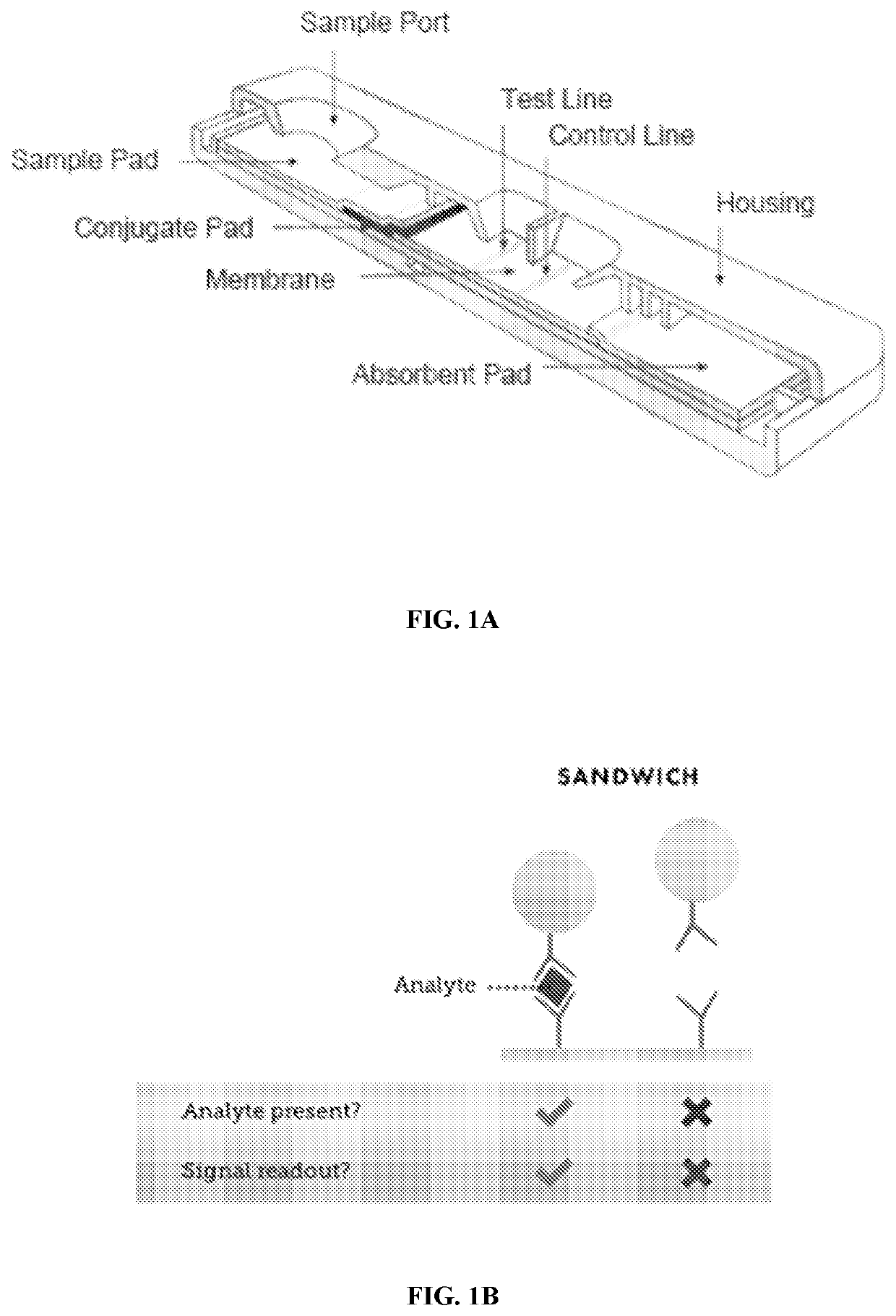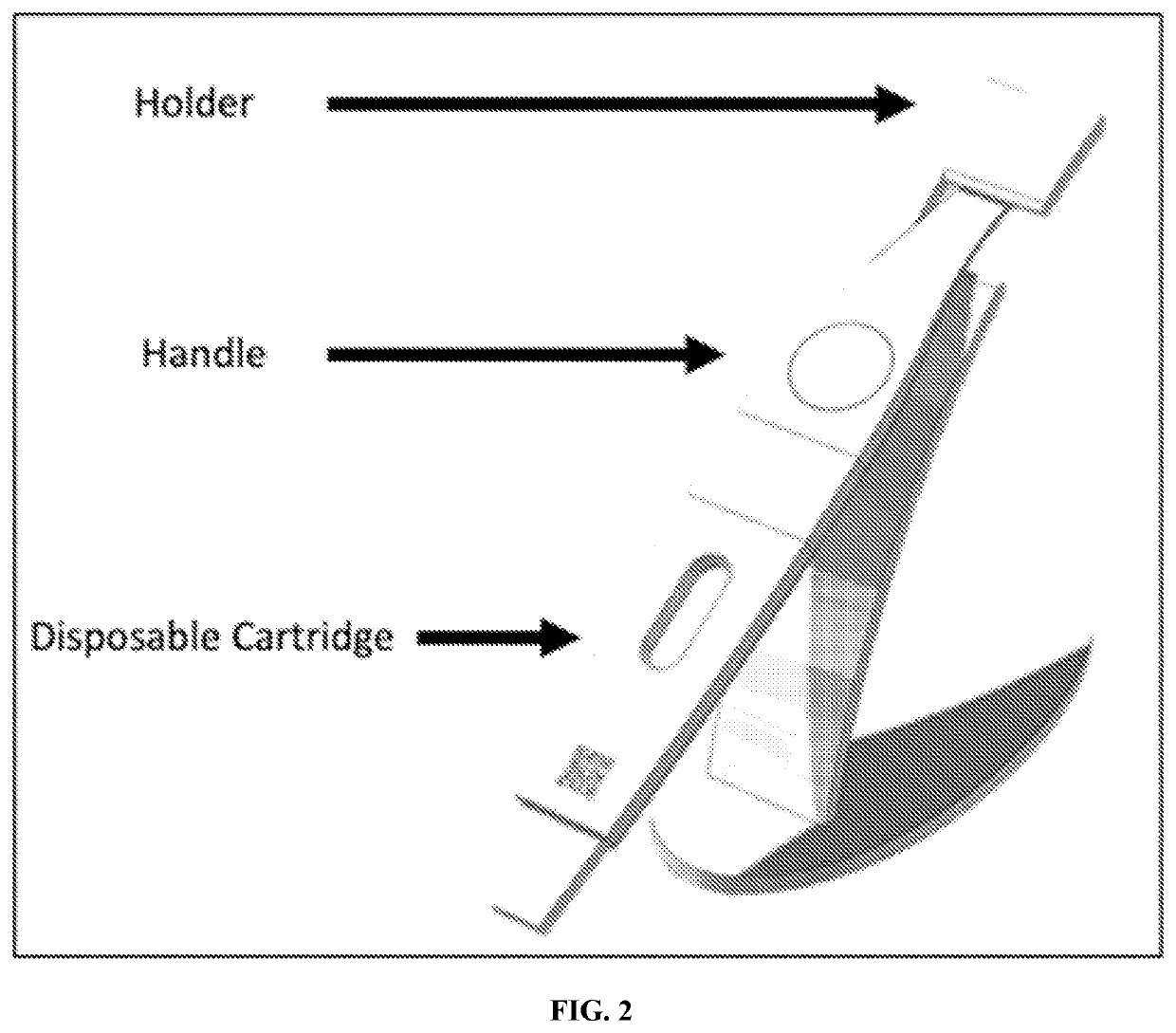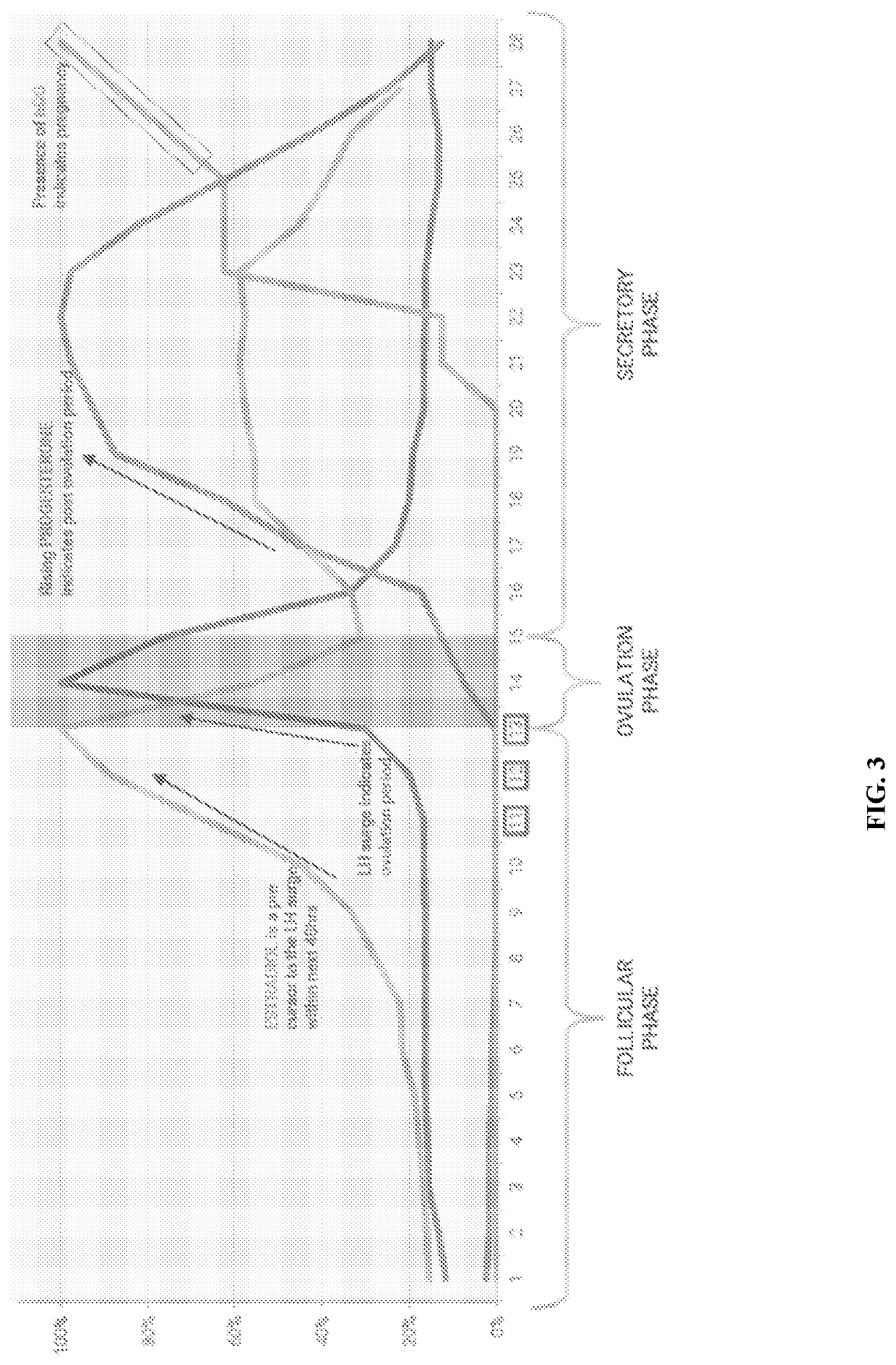Methods, devices, and systems for detecting analyte levels
a technology of analyte and detection method, applied in the field of methods, devices, and systems for detecting analyte levels, can solve the problems of inability to successfully inform a woman, limited at-home methods of monitoring the ovulatory cycle of a woman,
- Summary
- Abstract
- Description
- Claims
- Application Information
AI Technical Summary
Benefits of technology
Problems solved by technology
Method used
Image
Examples
example 1
particles
[0232]150 nm diameter gold nanoshells comprising 120 nm silica core particles coated with a 15 nm thick gold shells were prepared and tested for sensitivity. The gold nanoshells demonstrated a dramatic increase in sensitivity in lateral flow assays compared to 40 nm gold spheres.
[0233]FIG. 11 compares the detection sensitivities between 40 nm colloidal gold spheres and gold nanoshells. The bar chart indicates the sensitivity of both 40 nm colloidal gold spheres and gold nanoshells. The data show that the gold nanoparticles of the disclosure were more sensitive than 40 nm colloidal gold spheres at concentrations of 0.5 ng / mL, 1 ng / mL, 2 ng / mL, 4 ng / mL, 8 ng / mL, 16 ng / mL, and 20 ng / mL. The data also show that the gold nanoshells could detect the presence of analytes at concentrations of 0.005 ng / mL, 0.1 ng / mL, and 0.3 ng / mL, whereas the 40 nm colloidal gold spheres could not detect the presence of the analyte.
example 2
rototype Test Strips
[0234]Prototype lateral flow strips were developed to validate image processing algorithms using colloidal gold nanoshells. The test strips were made of nitrocellulose membrane, and were 8 mm wide and 70 mm long. Each test strip was populated with a sample for about 5 minutes, and utilized goat IgG as a test. The strips were activated using sodium ethanoate as a running buffer (i.e., no hormone of interest was present) with each strip having a known intensity of the line. The tests were used to determine line intensity quantification for the purpose of developing the imaging software, and not for analyte detection. The first round of prototype strips were delivered in seven batches of 100 strips each. The individual batches represented hard printed test lines of varying intensities when exposed to the buffer solution. The dummy strips were used to test the sensitivity of the algorithm and hardware by ensuring detection of minute differences between the known inte...
example 3
ture Device
[0245]An image capture reader was used to capture the results of the quantitative test strips. The primary components of the reader were: 1) a raw camera sensor; 2) LED lights; 3) a microcontroller; and 4) simple optics. The goal of the reader was to capture a high resolution, magnified image of the diagnostic strip.
[0246]The imaging apparatus prototype was designed to be modular enough to be able to iterate on the hardware until sufficient images could be acquired. The imaging apparatus prototype comprised of a cool white, 10 mm diameter light-emitting diodes (LEDs); an 8 megapixel Raspberry Pi Camera v2; a Raspberry Pi 3 with Raspian Light OS, python 3.1, and OpenCV package for image capture control and storage; and a 7.5× magnifier glass optical lens.
[0247]FIG. 21 shows a blueprint of the image capture reader. FIG. 22 shows a prototype of the image capture reader, which provided controlled lighting and included a holder for a test strip.
PUM
 Login to View More
Login to View More Abstract
Description
Claims
Application Information
 Login to View More
Login to View More - R&D
- Intellectual Property
- Life Sciences
- Materials
- Tech Scout
- Unparalleled Data Quality
- Higher Quality Content
- 60% Fewer Hallucinations
Browse by: Latest US Patents, China's latest patents, Technical Efficacy Thesaurus, Application Domain, Technology Topic, Popular Technical Reports.
© 2025 PatSnap. All rights reserved.Legal|Privacy policy|Modern Slavery Act Transparency Statement|Sitemap|About US| Contact US: help@patsnap.com



